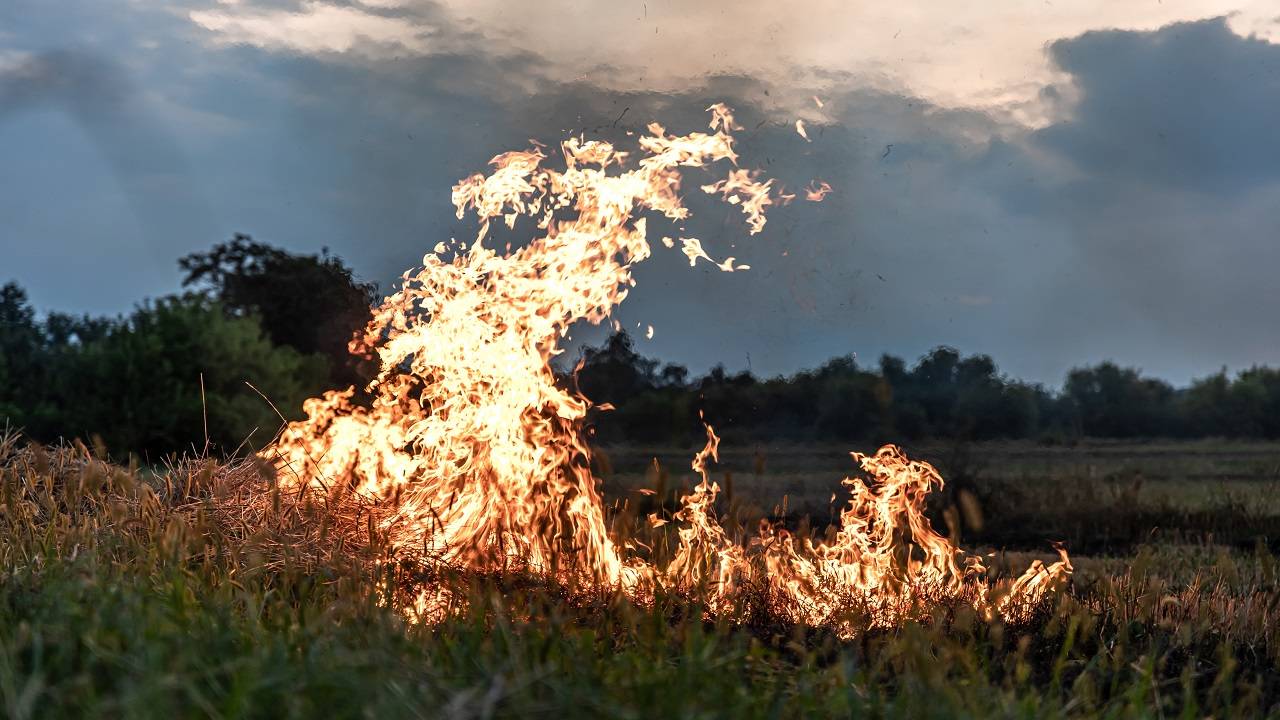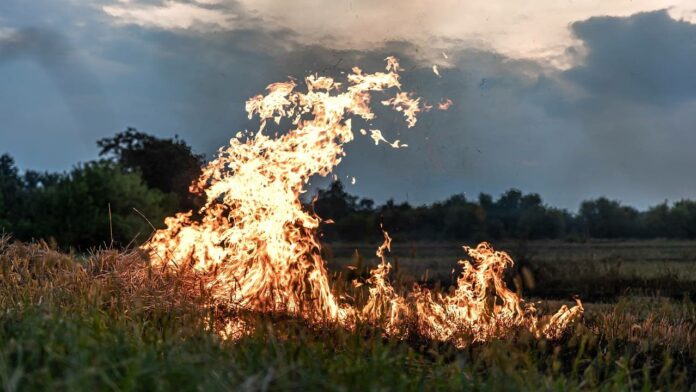
Slashing, a harmful agricultural practice, has seen a significant increase in several states of North India, including Haryana, Punjab and Uttar Pradesh, during September.
Additionally, Madhya Pradesh and Rajasthan have seen a significant increase in such incidents over the same period last year.
However, the central government is optimistic about reducing incidents of paratha burning this year by implementing various measures. During the critical paddy harvesting period in the north, from September 15 to November 30, 2022, there was a 24 percent reduction in burning incidents, with 69,615 incidents reported compared to 92,047 last year. Punjab reported the highest number of cases with 49,922 cases.
According to data from the Consortium for Research on Agro-ecosystem Monitoring and Modeling from Space (CREAMS) managed by the Indian Agricultural Research Institute (IARI), there were 354 incidents of paratha burning in the country during September 15-30, compared to 159 are more than same period last year.
Punjab, which reported 214 incidents of crop residue burning last month compared to 147 last year, saw 81 on September 30 and 68 on September 29. The highest number of cases came from Amritsar district, with 174 cases.
Haryana reported 75 cases of which 17 occurred in Kurukshetra and 13 in Karnal. In contrast, only one case was seen in Jund during the same period last year. This year there were 12 incidents in Sonepat, 11 in Ambala, 7 in Yamunanagar, 5 in Fatehabad and 3 each in Panipat and Jund. These districts are famous for the production of basmati rice.
Experts have noted that there was a high demand from commercial dairy farmers for the collection of crop residues last year, which is absent this year.
Among other states, Uttar Pradesh reported 33 cases of leaf burning, while Madhya Pradesh had 21 cases and Rajasthan had 10 cases. During 15–30 September 2022, there were 10 incidents in Uttar Pradesh, none in Madhya Pradesh, and one in Rajasthan.
Burning of trees has been a recurring problem in these states for many years. Farmers often resort to manually clearing crop residues and burning them instead of selling them as fodder due to economic reasons.
Additionally, since Punjab, Haryana, and Uttar Pradesh do not allow paddy sowing before June 20, farmers have limited time to prepare fields for wheat sowing after paddy harvest.
Paddy area including basmati rice has increased in many states this year. Paddy area in Punjab increased from 31.68 lakh hectares to 32 lakh hectares in 2022, while Haryana’s area increased from 13.9 lakh hectares to 15.2 lakh hectares.
Similarly, Uttar Pradesh increased from 57.78 lakh hectares to 59.01 lakh hectares, and Madhya Pradesh increased from 32.37 lakh hectares to 33.85 lakh hectares.
The government has taken measures to tackle the problem of burning parathas. During a workshop on Clean and Green Solutions for Rice Straw Management organized by the Confederation of Indian Industry (CII) in collaboration with the Ministry of Agriculture and Farmers’ Welfare on September 29, the Ministry’s Joint Secretary S Rakmani expressed the commitment of the Govt. Emphasized. Helping farmers manage crop residues.
The government has introduced revised guidelines on crop residue management (CRM) and is promoting ex situ management of straw. It provides financial assistance for the capital cost of machinery through a subsidy of up to 65 per cent for projects, with industry contributing 25 per cent towards operational costs. Rukmani highlighted the potential of khonti as a source of wealth.
In summary, incidents of paratha burning have increased in North India in September, with Punjab, Haryana and Uttar Pradesh being the worst affected.
Nevertheless, the government is taking steps to reduce such incidents, including promoting crop residue management and offering financial assistance for machinery. Addressing this issue is crucial for environmental and agricultural sustainability in the region.
First Published: 02 Oct 2023, 11:45 IST
